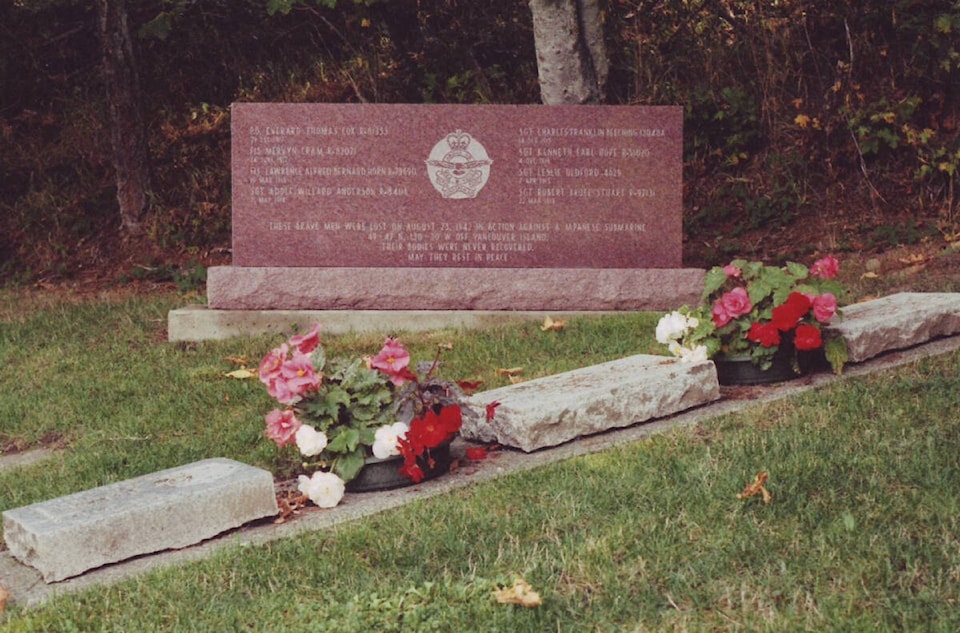By T.W. Paterson
Everyone accepts that the First World War ended with Armistice in 1918; that’s why we have Remembrance Day on Nov. 11.
Technically speaking, this isn’t the case. Yes, the fighting stopped at the 11th hour of the 11th day of the 11th month, 1918 — Armistice Day.
But the actual date of war’s end, so far as the historical record goes, is Aug. 31, 1921. That’s when — almost three years after the guns fell silent — the Allied nations concluded the Treaty of Versaille with Germany and its allies.
••••
In Nanaimo, Women’s War Work is being marked with ‘The Canadian Red Cross Comfort Quilt’ now on display in the Vancouver Island Military Museum. Incredibly, of the hundreds of thousands of quilts made by Canadian knitters during a single six-week period in the Second World War for distribution by the Red Cross and the Salvation Army (400,000 in Britain alone), few are known to have survived.
But now, after almost 80 years, according to Nanaimo Magazine, the British quilts are being traced and repatriated to Canadian museums by the Canadian Red Cross Research Group in the U.K. So far, only 200 have been documented and 100 collected.
The VIMM is “honoured to be chosen as a recipient of this new exhibit, and to display it as a further testament to the tireless dedication of women during war time”.
••••
Parksville has come up with a novel and very visual way to honour that community’s war dead: commemorative banners bearing the photo and name of veterans named on the city’s cenotaph. These will be hung on street lamp standards. Hopefully, other communities will follow suit.
••••
Yes, the annual broadcast of CBC Radio’s The Shepherd is meant as a Christmas event, airing as it does on the last As It Happens show before Christmas. But that’s only six weeks away and, because the key to this wonderful novella by British author Frederick Forsyth is a Second World War Mosquito fighter bomber, I make this suggestion to mark it on your calendar.
To give away the plot for anyone who hasn’t heard this incredible tale that’s right out of the Twilight Zone, as told so well by the late ‘Fireside’ Al Maitland, would be little less than travesty.
Proof of The Shepherd’s phenomenal popularity with modern-day radio listeners is the fact it has been broadcast “nearly every Christmas” since 1979!
It has become a tradition such as Charles Dickens’s Night Before Christmas Story!
In 2022, actor John Travolta was said to be filming a cinematic version of The Shepherd on location in West Raynham, Norfolk, Eng.
To hear The Shepherd, mark your calendar to tune in to CBC Radio or stream it live or on-demand on the CBC Listen Page or the CBC Listen app.
Yes, you can play it any time, but for many, myself included, it works best as a lead-up to Christmas when played yet again on As It Happens. As a bonus, it also includes an interview with the late Frederick Forsyth and a Second World War Mosquito pilot. I promise you, you won’t be disappointed.
••••
In July, there was a special ceremony in Victoria’s St. Mary’s Anglican Church. For 103 years, St. Mary’s was home to the retired colours (ceremonial flag) of the 88th Victoria Fusiliers — volunteer soldiers who enlisted in Victoria (my maternal grandfather John Thomas Green among them—TW) during the First World War.
The flag, which recalls the horrors of three battles of that so-called Great War, Ypres, Festubert and Langemarck, are on their way to display in the Canadian Scottish Regimental Museum at the Bay Street Armoury.
As it was the practice of the day that the Fusilier’s ceremonial colours were consecrated by the Church of England (Anglican Church), they were kept there since the war’s end. They were temporarily taken down in 1951 when the church was rebuilt and renovated then returned to their place of honour upon completion.
Rev. Canon Craig Hiebert presided over a public handover ceremony at St. Mary’s Chapel that included representatives of the Canadian Scottish Regiment (Princess Mary’s) and a piper from the regiment.
It’s interesting to note that regimental colours are meant to hang “until they naturally fall off their standards”. Consequently, although they’re faded from exposure to sunlight and have collected a century of dust, no attempts will be made to preserve them as would normally be the usual case with precious artifacts.
“Our intention is only to preserve them longer in a natural state,” Hiebert told the Times Colonist. “They…are intended to decay.”
The First World War ended in 1918; the 88th Fusiliers were reorganized with the 50 Regiment in 1920 as the present-day Canadian Scottish (Princess Mary’s) Regiment.
••••
Just a few years old is the Lost Airmen of the Empire memorial on Hospital Hill, Mills Road, on the north side of the Victoria International Airport.
Its 25 iron feathers record the names of 179 young men who never made it overseas, who were killed in crashes while learning to fly at a time of blackouts, in extremes of weather and over some of the wildest terrain on the continent.
Some of them have never been found.
T.W. Paterson is an author and historian. For more, check out twpaterson.com
